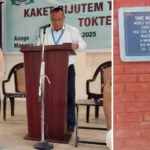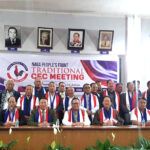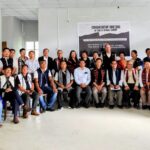The India-Myanmar border is not merely a line on a map; it’s a cruel incision carved through families, traditions, and a shared history that predates any imaginary line.
Recently, the Government of India’s announcement to fence the border, dividing lands and communities, has sparked concerns and calls for thoughtful consultation.
Imagine, for a moment, your kitchen in one country, your bedroom in another. Your village split in two, with a barbed wire fence slicing through the heart of your community. This is going to be the chilling reality for many Naga people along the India-Myanmar border, where tribal lines and ancestral lands don’t align with the cold calculations of international boundaries.
Imagine the boundary running through the heart of Naga lands – the Konyak, Khiamniungan, Lainong, Makury, Tangkhul, Tangshang – with families split between India and Myanmar. This vivid scenario underscores the challenges and intricacies of the India-Myanmar border, where the Government of India plans to erect a fence.
Minister Temjen Imna Along, with commendable optimism, speaks of consultations and the “wisdom” of leaders. But consultations held behind closed doors offer little solace to villagers witnessing their ancestral lands cleaved; it rings hollow when juxtaposed with the bulldozers already carving a path through Manipur. This isn’t a technical exercise; it’s a matter of lives upended, communities fractured, and identities challenged. True wisdom lies not in unilateral decisions but in genuine dialogue, not in closed-door meetings but in open consultations with the very people whose lives hang in the balance.
The “wisdom” Minister Along speaks of must extend beyond the halls of Delhi. It must penetrate the heart of the Naga villages, listen to the elders, understand the pain of a divided land. The Naga people aren’t asking for special treatment; they’re asking for basic respect for their history, their culture, and their very existence. Their plea isn’t for open borders, but for a recognition of the human cost of arbitrary lines.
As the Government of India proceeds with fencing the border in Manipur, it remains to be seen whether it will take heed of the sentiments of the Naga people and uphold the principles of cultural sensitivity and international agreements. The India-Myanmar border is more than a line on the map; it is a living testament to shared histories and interconnected communities that deserve careful consideration and respect in any decision-making process.
The Naga story is a stark reminder that borders, on paper, don’t always reflect the complexities of lived realities. The Naga people are not asking for the moon; they’re asking for their land, their lives, and their stories to be seen, heard, and respected. In a world obsessed with security, let us not forget the human cost of misplaced fences.
Walls, by their very nature, divide and isolate. They are monuments to fear and suspicion. The India-Myanmar border needs bridges, not barriers. It needs solutions that acknowledge the complex reality of this region, and prioritize the human cost of any proposed action.



